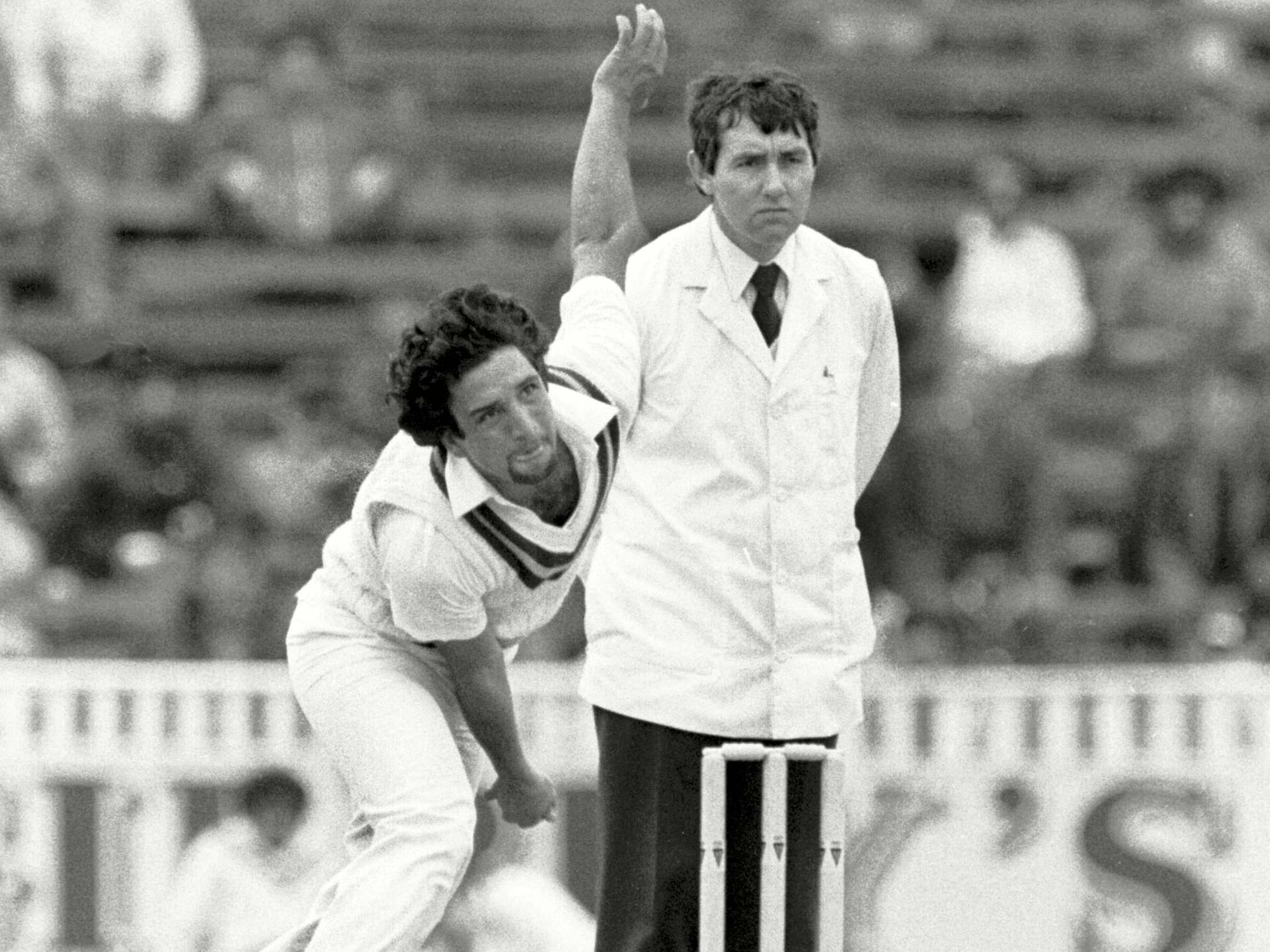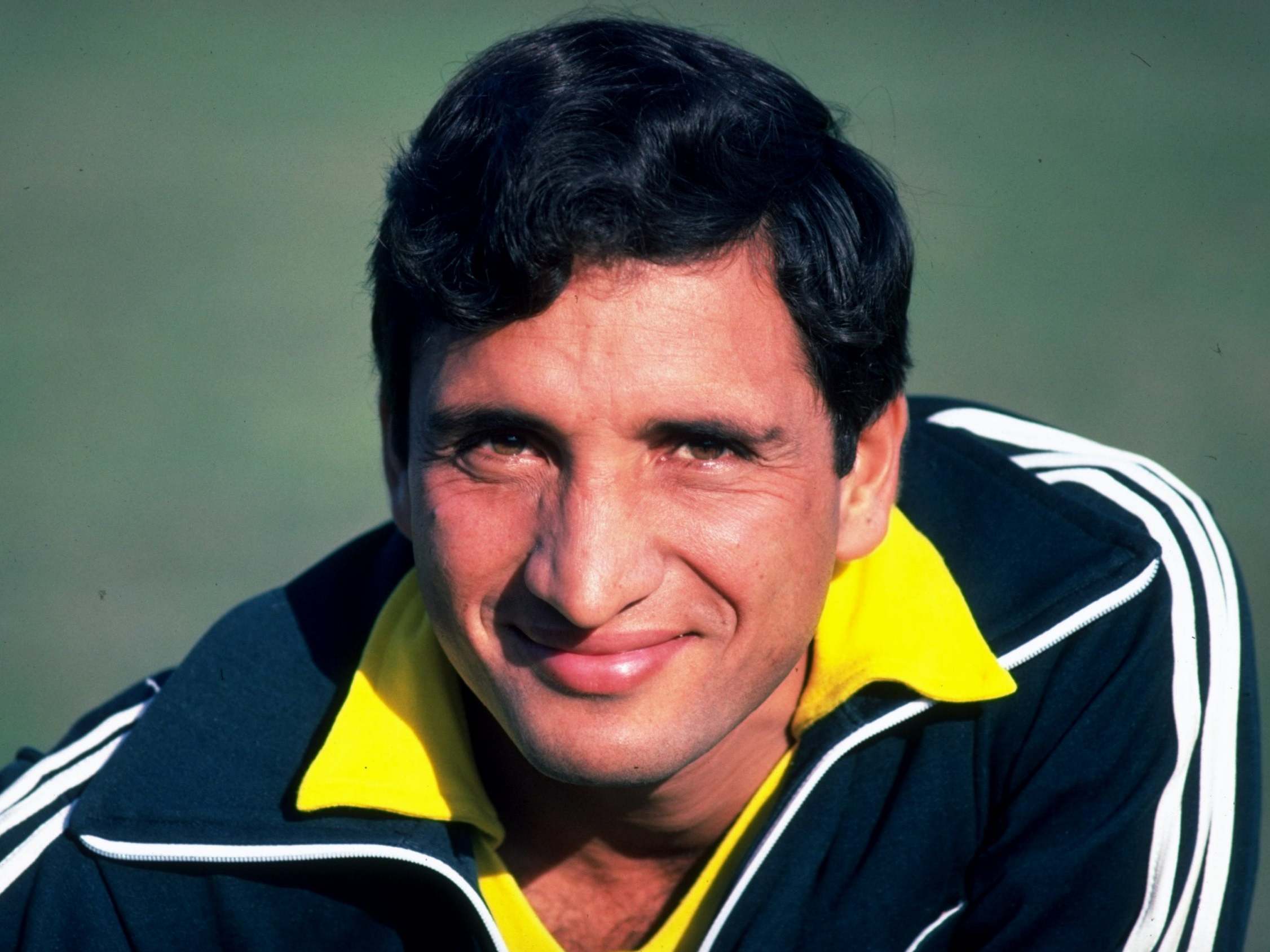Abdul Qadir: Pakistan’s record-breaking bowler who had England in a spin
His distinctive style made him a star on the field and he outclassed opponents over a long career

Your support helps us to tell the story
From reproductive rights to climate change to Big Tech, The Independent is on the ground when the story is developing. Whether it's investigating the financials of Elon Musk's pro-Trump PAC or producing our latest documentary, 'The A Word', which shines a light on the American women fighting for reproductive rights, we know how important it is to parse out the facts from the messaging.
At such a critical moment in US history, we need reporters on the ground. Your donation allows us to keep sending journalists to speak to both sides of the story.
The Independent is trusted by Americans across the entire political spectrum. And unlike many other quality news outlets, we choose not to lock Americans out of our reporting and analysis with paywalls. We believe quality journalism should be available to everyone, paid for by those who can afford it.
Your support makes all the difference.“Reading him is one thing; playing him is another.” So wrote the England Test match opener Graham Gooch in 1992 when describing Pakistan’s legendary spin bowler Abdul Qadir, who has died of a heart attack aged 63.
With his economical flowing approach and highly distinctive windmill-like action, this diminutive yet volatile master of length and flight used his long fingers and supple right wrist to spin his leg breaks, googlies, flippers and “wrong-uns” to often devastating effect. During a long and often eventful career, Qadir broke all manner of records, and few cricketers in recent years have captured the public imagination in the same way.
Born in the Dharampura district of Lahore, the second of four children of a leading religious preacher, Abdul Qadir Khan was educated at Arif High School before winning a place at Government College. Joining Javed Miandad’s Habib Bank Club in 1975, he immediately announced himself with 12 wickets in two matches.
Making his Test match debut against Mike Brearley’s England team in Lahore two years later, in the ensuing Hyderabad Test he took 6-44, claiming the scalps of Derek Randall, Graham Roope, Bob Taylor and Phil Edmonds in 16 balls for only four runs. Though touring England in 1978, injuries meant he played little, and over the next few years his cricketing career would inexplicably stall.
However, during Imran Khan’s tenure as captain Qadir’s name became one of the first on the team sheet. In return, Qadir not only named one of his four sons in honour of his fellow Lahorite but, having won a car when voted the best player in the Group B matches of the 1987 Reliance World Cup, he duly presented it to Khan.
His relationship with some of the other players and captains was often less than cordial. Accusing him of not trying, Zaheer Abbas had him sent home midway through the 1985 tour of New Zealand. When Qadir himself occasionally stood in as Pakistan’s leader, success proved equally elusive: he would lose four of his five matches in charge.
Touring England for the second time in 1982, Qadir immediately attracted widespread interest, capturing 42 wickets in only seven games against the counties. Proving less successful in the three-Test series, nevertheless his long bowling spells provided a most welcome glimpse of what cricket used to be like in the pre-helmet days.

Returning five years later, by now unchallenged as the leading leg break bowler in the world, his four wickets at Lord’s forced England to follow-on, prior to ultimate defeat. At the Oval, with the pitch starting to wear tireless and irrepressible, his 7-69 brought the visitors not only a resounding victory, but also a historic first series win on English soil.
Staying on to represent the Rest of the World in the MCC Bicentenary Match at Lord’s, he then went straight into the World Cup in India. There, a straight six and a match-winning single steered to third man brought his side a most unlikely victory over the West Indies. Twelve months earlier, in Faisalabad, Qadir had totally destroyed Viv Richards’ men, taking 6-16 in only 9.3 overs, as he hustled the visitors out for only 53 to herald a 186-run victory.
A visit to the Caribbean in the spring of 1988 proved more troublesome. During the Bridgetown Test match in Barbados, Qadir punched a heckler in the crowd. Initially issued with a court summons, the charges were later dropped.
Like many bowlers, Qadir liked to bat; but unlike so many, he was more than useful, scoring two first-class centuries, the first in only his second match. His 1,029 Test match runs included two half-centuries. However, it is his incomparable artistry as a bowler that ensures his place among the game’s elite. Making 209 first-class appearances, he took 960 wickets, while between 1977 and 1990, representing Pakistan in 67 Test matches, he claimed 236 victims. His best return, 9-56, came against England at the Gaddafi Stadium, Lahore, in November 1987. Unusually for a leg spinner, he proved a particular asset in one-day cricket, playing in 104 internationals and taking 132 wickets.
Steadfastly resisting overtures from both Kent and Surrey to play county cricket, in 1985 Qadir spent the summer in Scotland, helping Stenhousemuir to the league title. He later played club cricket in Australia.
A recipient of the Pakistan president’s medal for pride of performance, he remained a popular figure in retirement, using his newfound freedom to develop both his sports goods business and cricket academy. He also undertook a number of administrative roles within the game.
Abdul Qadir, cricketer, born 15 September 1955, died 6 September 2019
Join our commenting forum
Join thought-provoking conversations, follow other Independent readers and see their replies
Comments